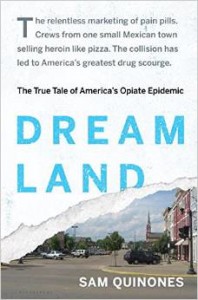Pulitzer Prize Uncovered Shocking Pill Pushing
We West Virginians can be excused for puffing out our chests a little bit over the recent news that Eric Eyre, a reporter for the Charleston Gazette-Mail won a Pulitzer Prize recently for investigative reporting.
Especially since such awards routinely go to staffers from the New York Times, Washington Post and other major newspapers with larger staffs and more prolific resources.
However, my point is not to brag about a small state newspaper winning a Pulitzer. Rather, I want to call attention to the outrageous reality of what Eyre documented: drug wholesalers shipping 780 million hydrocodone and oxycodone pills to the state from 2007 through 2012.
Mind Boggling Figures

While I’m glad that a few dozen hydrocones were available when I was recovering from open heart surgery in 2008, these figures are mind-boggling to an extreme.
So extreme that it gives credence to old-fashioned conspiracy theories. I remember when I first heard that crack cocaine was a plot by the CIA to destroy inner cities, and scoffing at the idea.
Sure, it wound up a discredited theory, but to imagine that powerful people have never taken advantage of the powerless is to engage in flights of fancy.
So what did pharmaceutical companies and their reps think they were doing shipping enough painkillers into the state to anesthetize everyone here 10 times over—and all the cows, pigs and sheep to boot? That we all had bad backs?
Seeing Dollar Signs

This isn’t some wild-eyed theory. Former Los Angeles Times reporter Sam Quinones spells out the role of the Big Pharma marketing machine in his excellent book, Dreamland: The True Tale of America’s Opiate Epidemic.
When I heard him speak at Marshall University in the fall of 2015, Quinones laid out the story of how companies pushed the idea that people were in too much pain, and that the pills they had invented to address the problem weren’t addictive.
Yeah, right. And now we pay the price. Like the man in our area who lost his wife and only daughter to a drug-addled driver who was constantly prescribed pain killers by a doctor.
That particular physician lost her license. But I wonder if the pharmaceutical companies who encouraged doctors to prescribe all these opioids—and pharmacies to stock them like candy bars—will ever be held to account.
Trail of Devastation
Now, it’s not like we’re alone in our misery. Take the lawsuit filed earlier this year by the Seattle suburb of Everett, Washington, against the maker of OxyContin.
The suit came after the LA Times revealed in an investigation last year that the company allegedly had extensive evidence pointing to illegal trafficking across the nation, but often didn’t share that with law enforcement or cut the flow of pills.
The company has been sued hundreds of times over its marketing of OxyContin to doctors and the drug’s risk of addiction to patients, the Times reported. However, “Everett’s suit is the first to focus narrowly on what the company knew about criminal distribution of the painkiller.”
The company will get its day in court, if the case even makes it that far. In the meantime, we can only hope that more reporters will uncover the abuses that have left such a trail of devastation in their wake.


